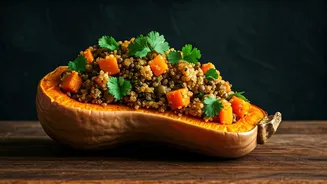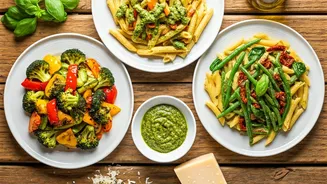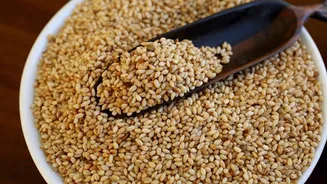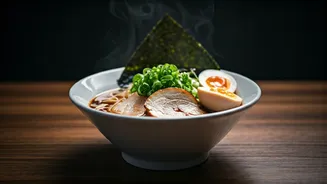Squash Selection and Prep
The first step to crafting this amazing dish is choosing your butternut squash. Opt for ones that are firm to the touch, and have a rich, uniform color.
The squash should feel heavy for its size. After selecting your squash, preparation is key. Begin by washing the squash under cool running water, scrubbing away any dirt or debris. Next, carefully trim the top and bottom of the squash to create a flat surface. This helps keep the squash stable while you're working with it. Using a sturdy chef's knife, cut the squash in half lengthwise, from top to bottom. Scoop out the seeds and any stringy fibers from the cavity. Once the squash is hollow and clean, it's ready for roasting.
Roasting the Squash
Roasting the butternut squash is what gives it that tender, melt-in-your-mouth texture that is essential for this recipe. Preheat your oven to 400°F (200°C). Place the prepared squash halves, cut-side up, on a baking sheet. Lightly brush the inside of each squash half with olive oil. This prevents the squash from drying out and helps it to caramelize. Season the squash with salt and pepper to taste. You can also add a pinch of other seasonings at this stage, such as dried herbs like rosemary or thyme, or a dash of paprika for a smoky flavor. Roast the squash for about 45 minutes to an hour, or until it is fork-tender. The squash should be easily pierced with a fork. Once the squash is roasted, set it aside to cool slightly while you prepare the filling.
Lentil and Quinoa Filling
This is where the magic happens! The lentil and quinoa filling provides a wholesome and flavorful counterpoint to the sweetness of the squash. Start by rinsing 1 cup of dry quinoa thoroughly under cold water. This removes the outer coating, which can taste bitter. Cook the quinoa according to package directions, typically in a ratio of 2 parts water to 1 part quinoa. Bring the water to a boil, add the quinoa, reduce the heat, and simmer until the water is absorbed and the quinoa is fluffy. Simultaneously, cook 1 cup of dry lentils according to their package instructions. This often involves simmering the lentils in water until they're tender but still have some bite. While the grains and lentils are cooking, prepare the aromatics. Sauté chopped onions, garlic, and any other vegetables you like in olive oil until softened. Once the grains, lentils, and vegetables are cooked, combine them in a bowl and mix well.
Flavor Boosters and Assembly
Once you have the base of your filling ready, it's time to add some layers of flavour. Think about incorporating some aromatic herbs like fresh parsley, cilantro, or oregano. You could also include some chopped sun-dried tomatoes, Kalamata olives, or even a sprinkle of feta cheese to give the dish a Mediterranean edge. At this point, you can adjust the seasoning by adding salt, pepper, or a squeeze of lemon juice to brighten the flavors. Taste the filling and make any needed adjustments. Now, you’ll want to fill the roasted butternut squash. Once the squash has cooled enough to handle, spoon the lentil and quinoa mixture generously into the cavity of each squash half. Pack it in, making sure to fill each cavity completely.
Baking and Serving
Once the squash is stuffed, it’s time to bake it again. Place the stuffed squash back on the baking sheet and return it to the oven. You can bake it at the same temperature, 400°F (200°C), for about 15-20 minutes. This will allow the flavors to meld and the filling to heat through, and the squash will become even softer. Keep an eye on the filling, as you want it to be heated but not overly dried out. After the second baking period, take the squash out of the oven. If you like, you can garnish it with fresh herbs like parsley, a drizzle of olive oil, or a sprinkle of cheese. Let the stuffed butternut squash rest for a few minutes before serving. This allows the flavors to settle and makes it easier to handle. Serve it hot, and enjoy the delicious combination of textures and flavors.














